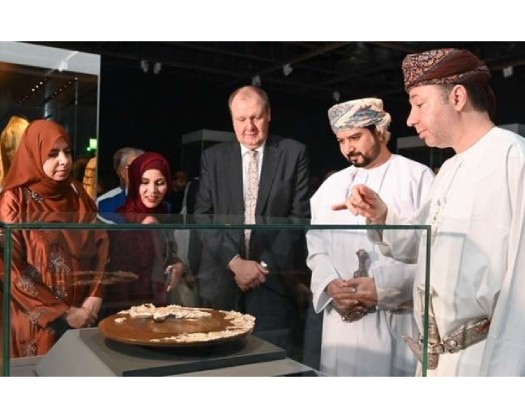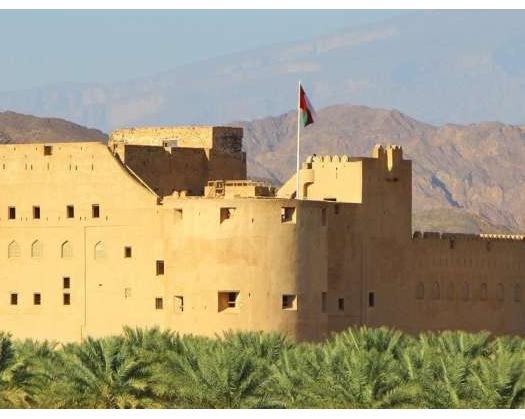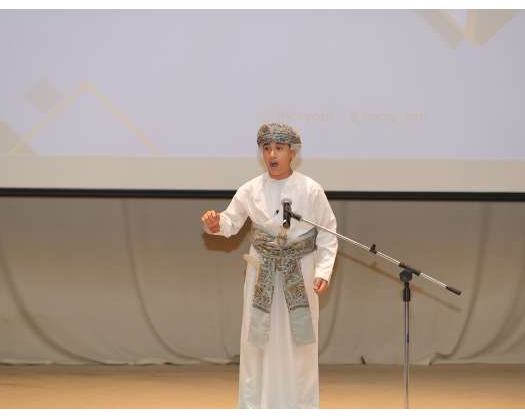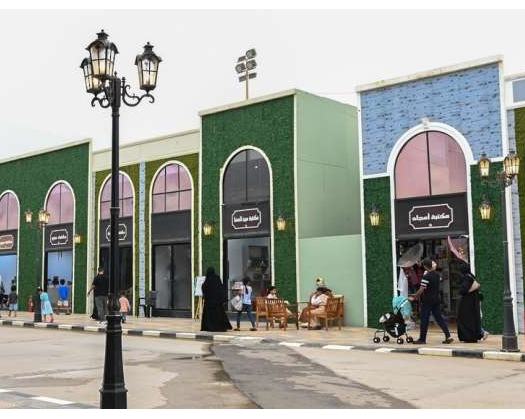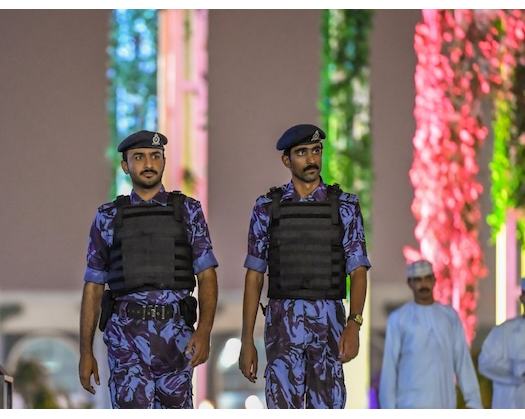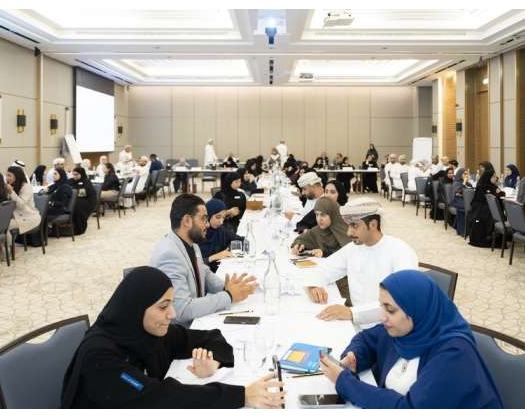Muscat— As part of "The Russian Seasons," the National Museum launched the NeoRussian Style exhibition in partnership with the State Hermitage Museum, with Qais Mohammed Al Yousef, Minister of Commerce, Industry, and Investment Promotion, serving as patron.
The exhibition, which runs until November 2, 2025, focuses on the vibrant period in the history of the Russian Empire's artistic life in the 1880s and 1910s, when the Russian style in art underwent a new rise several decades after it was first established.
During the reigns of Emperors Alexander III and Nicholas II, the Neo-Russian style emerged in the architecture of St. Petersburg, Moscow, and both large and small provincial towns of Russia, as well as in painting, sculpture, decorative, and applied arts.
Jamal Hassan Al Moosawi, Secretary General of the National Museum, stated during his opening speech that the opening of this exhibition is part of a series of cultural events planned as part of the Russian Cultural Seasons. These events reflect the ongoing interaction with cultural and museological institutions in the Russian Federation to strengthen the ties of cultural and museological cooperation, the most recent of which was the launch of the National Museum's website in Russian.
He continued, saying that cultural diplomacy involves collaborating with the Russian Ministry of Culture on several joint projects and events, such as musical seasons at Bayt al-Greiza this October and collaboration with the State Tretyakov Gallery to arrange an exhibition on the pioneers of Omani fine art.
In the same spirit, there is cooperation with the Moscow Kremlin Museums to present the exhibition 'Imperial Russia and the East,' as well as the establishment of a dedicated Omani publications corner at Chechen State University and the National Library of Russia, commemorating the 40th anniversary of diplomatic relations between the Sultanate of Oman and the Russian Federation.
On his turn, Oleg Vladimirovich Levin, Ambassador of the Russian Federation to the Sultanate of Oman, remarked in his address that the exhibition highlights a period of Russian culture in the late 19th and early 20th centuries, known as the peak of the Russian style, which reflects diversity.
Tradition of the Russian Empire as expressed through art, architecture, and everyday life.
He went on to say that this exhibition is an important step toward enhancing cultural dialogue between the Russian Federation and the Sultanate of Oman, as it demonstrates how art and tradition can act as a bridge between nations in the effort to preserve the world's cultural essence.
During the event, a video message from Professor Dr. Mikhail Piotrovsky, Director of the State Hermitage Museum and Board of Trustees member of the National Museum, was played. In his speech, he expressed his pleasure at the opening of the exhibition NeoRussian Style, which showcases the evolution of Russian culture from the 1880s to the 1910s.
The exhibition features outstanding instances of applied arts as well as historical masquerade costumes worn at court balls during Imperial Russia. He also mentioned the debut of the second exhibition under the Hermitage Museum Corner initiative, titled Gifts of the Emirs of Bukhara and Central Asia to the Russian Imperial Court, and expressed his excitement for the upcoming exhibition in the Oman Hall at the State Hermitage Museum.
The exhibits include gifts to Russian monarchs, such as tray dishes, saltcellars, and fans. These items, such as a mirror, represented the concept of unified people, Church, and Tsar, which was established as the official ideological triad in the Russian Empire in the early nineteenth century.
Among the exhibits is a silver presentation dish, which oilmen from the Absheron Peninsula gave to Emperor Alexander III and Empress Maria Feodorovna during their visit to the Caucasus in 1888 CE. The dish was created in the Russian style at the famous jewelry workshop of Ivan Khlebnikov.
The exhibition also includes a silver presentation salt cellar with a lid, which was given to Emperor Nicholas II upon his return from his Eastern journey between 1890 and 1891. It was created at the renowned Pavel Ovchinnikov factory in Moscow and presented to the emperor by artisans from the Southern Ural area.
Additionally, the displays feature a lace fan crafted of Vologda bobbin lace, with the letter M etched on a yellow Stain Pad in a Wooden Case. The fan belonged to Empress Maria Feodorovna and was dated 1883 CE.
A portrait of a young woman dressed in traditional Russian attire, including the kokoshnik headdress, painted by Sofya YunkerKramskaya in the early 20th century is also on display.
Of particular note are the character costumes created for the fashionable Russian-style costume parties of the time, which were made in the capital's shops by the finest tailors for representatives of the imperial family and the upper aristocracy. Such parties were held in both the modest homes of regular townspeople and the opulent mansions of the Russian nobility, in halls rented for one evening by all kinds of charitable organizations, as well as in the glittering grand ducal and tsarist residences. The opulence and grandeur of the Russian imperial court were fully displayed during balls and masquerades, where costumes were the primary element of the celebrations.
The Yusupov princes, whose outfits will be displayed at the exhibition, were known as unrivaled organizers of masquerades and historical balls in St. Petersburg.
The most renowned court masquerade in Russian style was the grand ball of 1903 at the Winter Palace, which explicitly represented the Romanov dynasty's grandeur and garnered a large public reaction. The opulent attire of Grand Duchess Ksenia Aleksandrovna, Emperor Nicholas II's sister, exemplifies the distinctive qualities of Russian fashion in the early 20th century.
It is important to highlight that the National Museum opened the second exhibition in the series at the beginning of February this year.
The State Hermitage Museum's Corner initiative is called Gifts of Bukharan and Central Asian Emirs to the Russian Imperial Court. The exhibition is the first event of the Russian Seasons in the Sultanate of Oman. It emphasizes the profound and historical connections between Russia and the peoples of the East, particularly the one-of-a-kind presents offered by Eastern monarchs to the Russian Imperial Court.
The second exhibition of the Oman Hall initiative, curated by the National Museum at the State Hermitage Museum and themed The Omani Empire Between Asia and Africa, drew 414,481 visitors between December 2023 and January 2025, indicating strong interest in Oman's rich cultural legacy.
The State Hermitage Museum in Saint Petersburg is one of the world's largest museums, with a collection of over three million artefacts. Founded in 1764, it is also one of the oldest museums in the world and a major tourist destination in Russia.
The museum is well-known for its extensive complex, which includes the Winter Palace, a historical landmark in its own right. The museum's collection includes artworks from Eastern Europe, Russia, Ancient Greece and Rome, the Near and Far East, and Central Asia. It also has a vast numismatic collection spanning antiquity to modern times, as well as weapons from Western Europe, the Middle East, and Russia, in addition to many archaeological finds.
Each year, the museum welcomes approximately 4 million visitors. Its 500 exhibition galleries display over 17,000 paintings, 12,000 sculptures, more than 1 million coins and medals, 800,000 archaeological artifacts, and more than 360,000 applied arts objects. Additionally, the museum holds more than 600,000 graphic art pieces, making it one of the world's most significant cultural institutions.

